These photos are from a wonderful trip along the west coast of the Antarctic Peninsula, the finger of land that juts up from the continent toward South America. Without question, the penguins were the highlight; but the other animals, the landscape, and the oddly shaped and sometimes deep blue icebergs were also quite extraordinary.
Penguins
Oh, how I adore these magnificent creatures. So industrious, inquisitive, and gorgeous. Watching them walk is a delight; they stumble over rocks, extending their wings for balance, jumping to make large ascents or descents, falling flat on their stomachs and springing to their feet as if nothing had happened. Their swimming is as sleek as their walking is awkward. With their powerful wings they glide swiftly through the water, at intervals leaping into the air like dolphins.
Types of Penguin
I was lucky enough to encounter five species; particularly fortunate because Emperor Penguins are usually not seen on that part of Antarctica — but one was there, alone, resting on an iceberg. Although perhaps not the most beautiful or colorful of penguin species, the Adélies have spunky personalities, making them my favorite.
| Adélie |
Gentoo |
Emperor |
Macaroni |
Chinstrap |
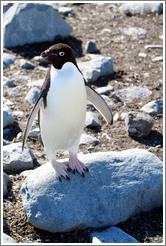 |
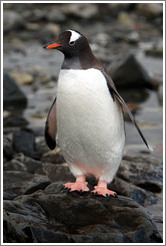 |
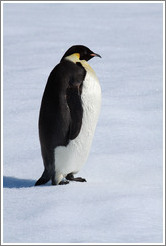 |
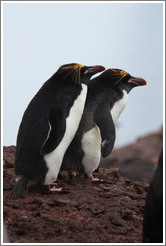 |
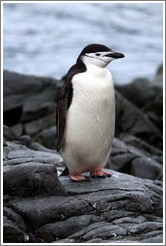 |
Walking
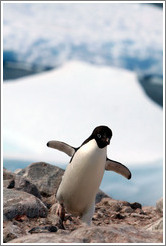
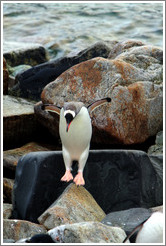
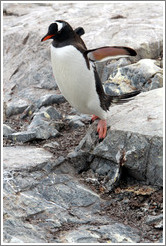
Feeding
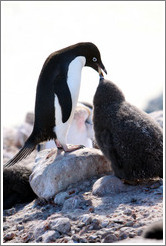
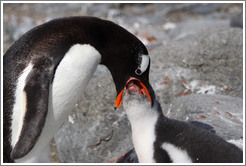
Swimming
Note: the 2nd photo is a Magellanic Penguin from Tierra del Fuego, not Antarctica; I didn't have such photographic luck with penguin porpoising in Antarctica.
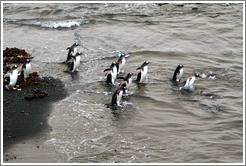
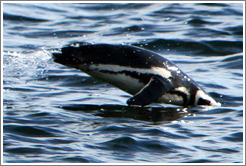
Resting
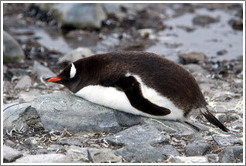
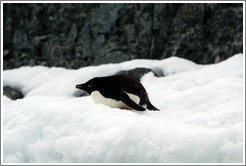
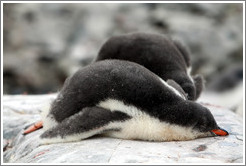
Nesting
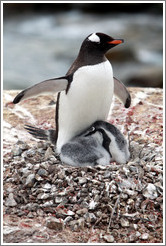
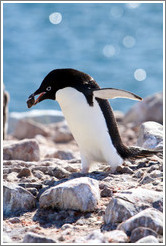
Calling
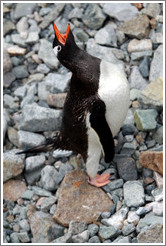
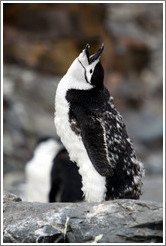
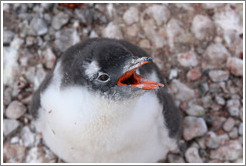
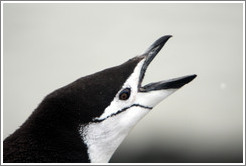
Molting
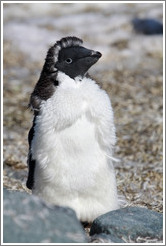
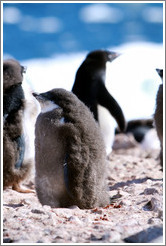
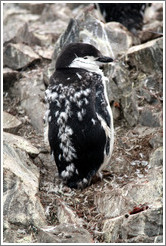
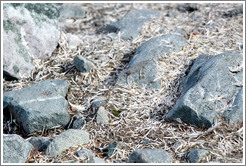
Standards of Cleanliness
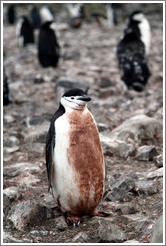
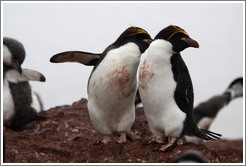
A few more Penguin Pics
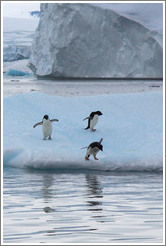
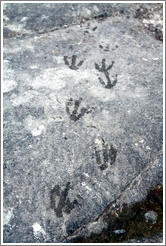
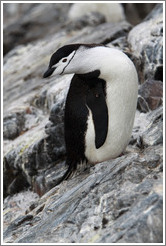
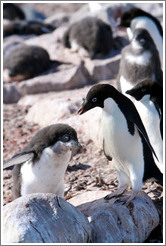
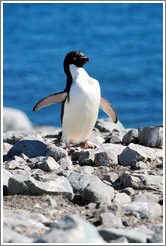
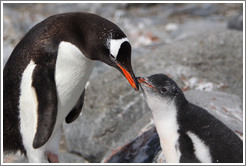
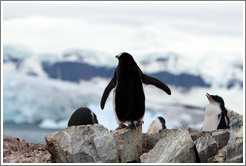
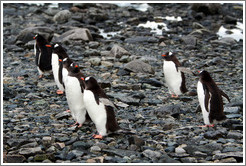
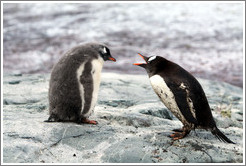
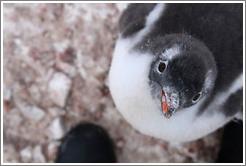
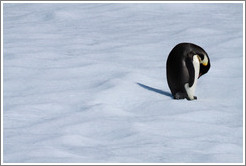
Seals
Types of Seal
Five types of seal were encountered on the trip. The Fur Seal is the only one with external ears. The Crabeater Seal is misnamed; it should have been called "Krilleater". Elephant seals are so ugly they're cute (unfortunately I only got shots of young ones which haven't yet formed the impressive proboscis). I have very mixed feelings about Leopard Seals; on the one hand they're reptilian-looking penguin-eaters; on the other hand, I must begrudgingly grant that they have a grace and beauty of their own.
| Leopard |
Weddell |
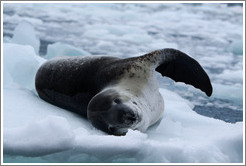 |
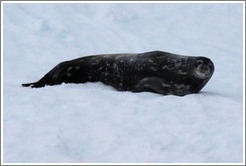 |
A few more Seal Pics
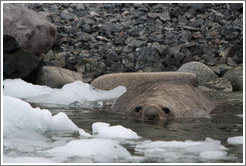
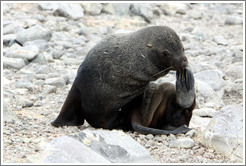
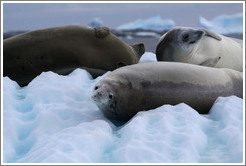
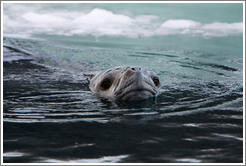
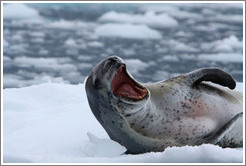
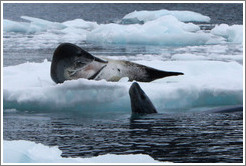
Birds (Excluding Penguins)
Types of Bird
Many birds were seen, only a few of which I managed to photograph. Favorite: the Snow Petrel — pure white with a sweet-looking face. Least favorite: the Brown Skua — aggressive; eats baby penguins.
| Cormorant |
Brown Skua |
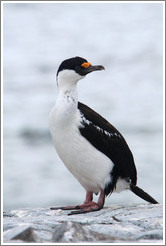 |
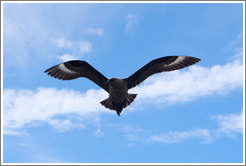 |
| Snow Petrel |
Kelp Gull |
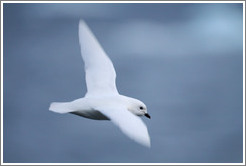 |
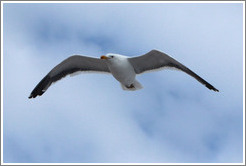 |
A few more Bird Pics
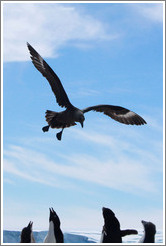
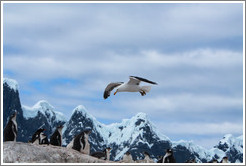
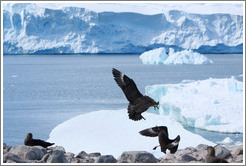
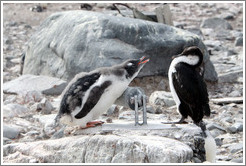
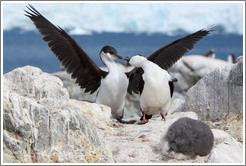
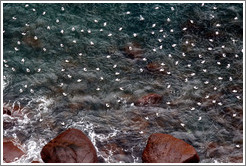
Whales
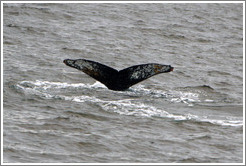 A few whales (or portions thereof) were seen. Only one photo is worth sharing; that of a humpback whale's tail.
A few whales (or portions thereof) were seen. Only one photo is worth sharing; that of a humpback whale's tail.
Icebergs
What most surprised me was how blue many of these icebergs are; the blueness is a result of glaciers' high pressure causing the air bubbles normally present in the ice to be squeezed out. A few photos below include penguins or people to give an idea of scale.
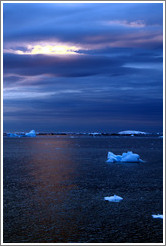
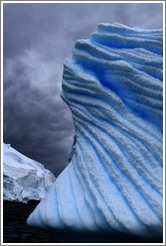
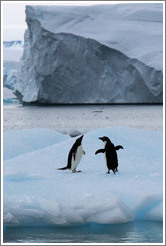
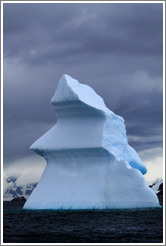
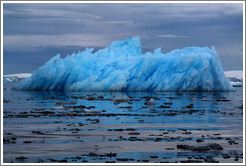
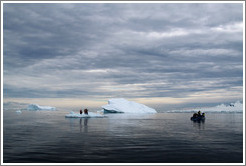
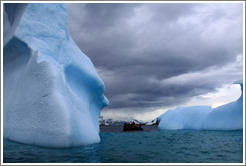
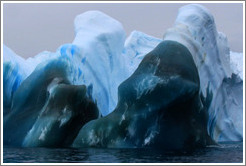
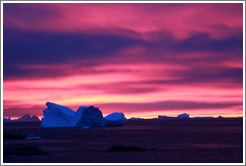
Landscape
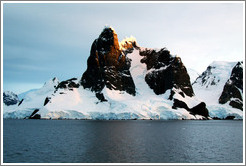
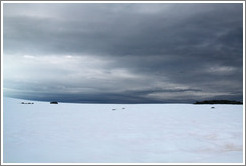
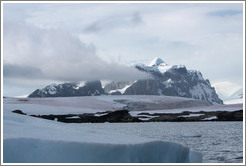
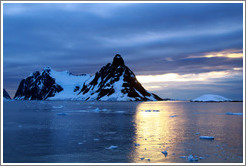
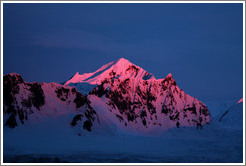
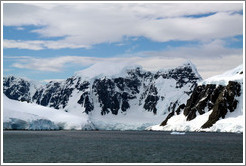
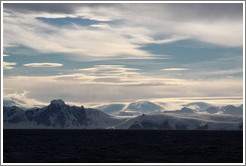
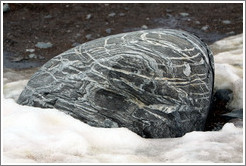
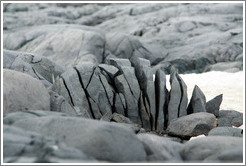
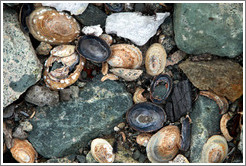
Human Construction
A few dozen research stations exist on Antarctica, some of which have residents year-round, and some of which are seasonal (summer only). In the past, sealers and whalers had premises on Antarctica as well.
Whalers Bay (Deception Island)
Sitting on a black sand beach of Deception Island, Whalers Bay was used by multiple whaling operations from 1906-31. Today the remains lie in ruins. Deception Island is also famous for the hot springs that supposedly make the water swimmable. I can attest that (at least at low tide), the hot springs cause a little water, perhaps a centimeter deep, to be warm right at the shore; further out, it is really, really cold.
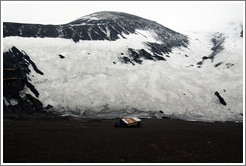
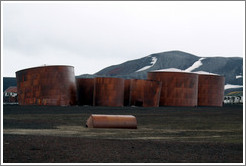
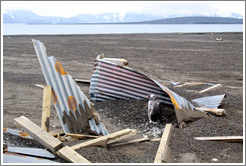
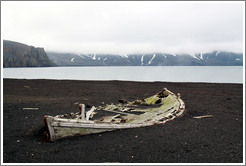
Port Lockroy (Goudier Island)
Port Lockroy is a British Station on an island just off the Antarctic Peninsula, conducting research into the effect of human visitors on Gentoo penguin breeding. To do so, they have two groups of penguins on the island; the control group with no human contact and another group which receives over 10,000 visitors per year. Humans are not allowed to touch the penguins, but of course, the reverse isn't true. The curious, bold, and positively angelic baby Gentoos enjoy gently pecking away at their human visitors. Port Lockroy was used for British military operations during World War II. Many artifacts from that time are present in the on-site museum.
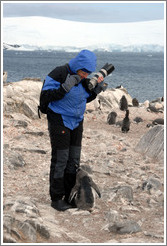
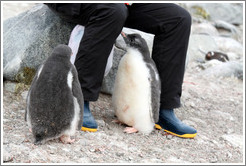
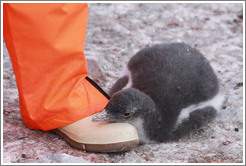
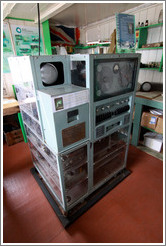
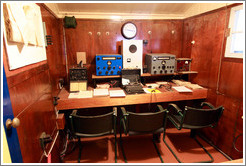
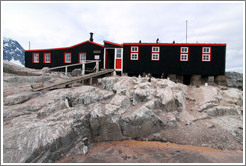
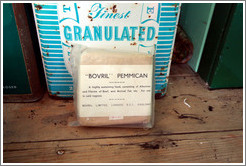
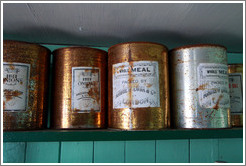
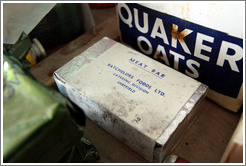
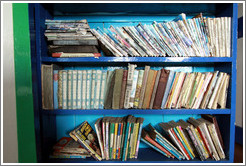
Vernadsky Station (Galindez Island)
This Ukrainian research station is famous for the Dobson meter which was used to find the ozone hole in the atmosphere above Antarctica. In addition to being a bona fide research station with meteorological and biological laboratories, the station also houses a bar, gift shop, and post office. When visitors are present, the computer engineer doubles as a bartender and the electrician as a tour guide. Fourteen people work at the station. All are male; hence the choice of gym adornment.
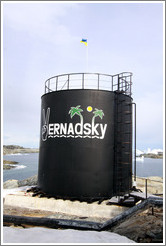
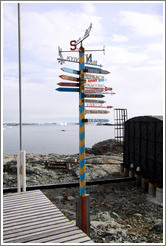
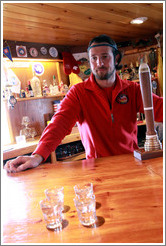
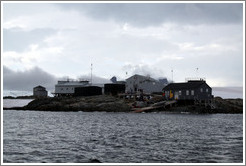
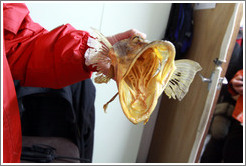
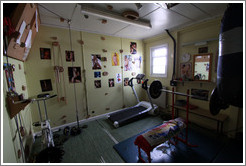
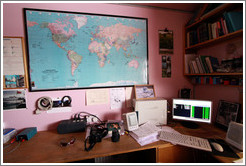
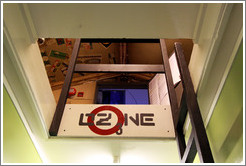
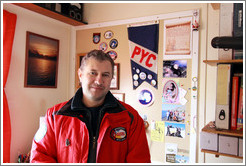
Wordie House (Winter Island)
This British meteorological research station was in operation from 1947-54 and is now designated as a historic site under the Antarctic Treaty System. Old equipment and staples have been well-preserved. The house contains a toilet but no bath (that I saw, at least).
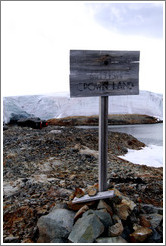
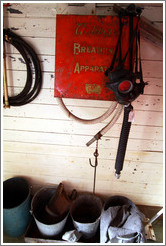
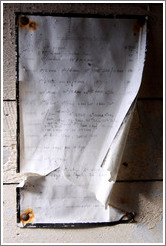
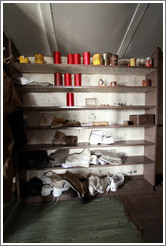
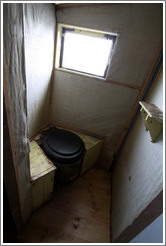
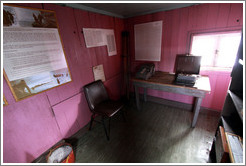
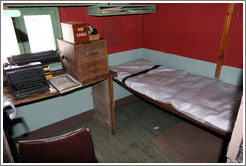
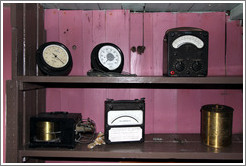
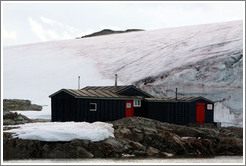
Getting There
The easiest way to reach Antarctica as a tourist is to take a boat leaving from Ushuaia, Argentina. It usually takes two days to reach the tip of the Antarctic Peninsula, though it can take longer; storms or strong winds in the notorious Drake Passage can lengthen journey time and cause severe rocking of the ship. An alternative is to leave from a port in Australia or New Zealand; it takes longer but reaches more southerly parts of the continent. I went with a company called Aurora Expeditions which I recommend highly for their relatively small tour group sizes and excellent lecture program. Some intrepid visitors to Antarctica have even made the journey in their own yachts!
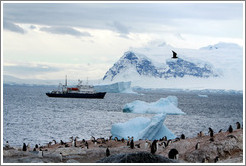
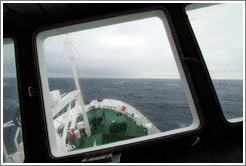
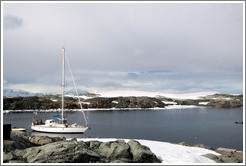
|
|
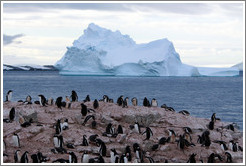













































 A few whales (or portions thereof) were seen. Only one photo is worth sharing; that of a humpback whale's tail.
A few whales (or portions thereof) were seen. Only one photo is worth sharing; that of a humpback whale's tail.





















































